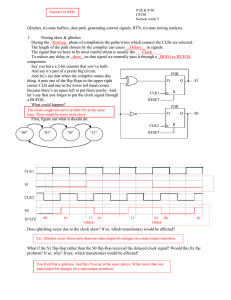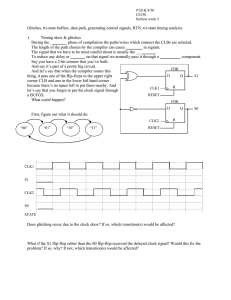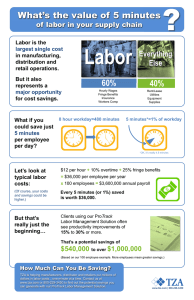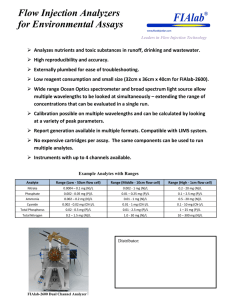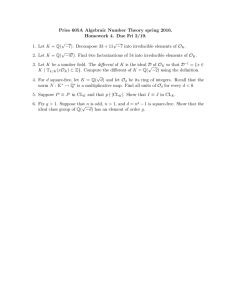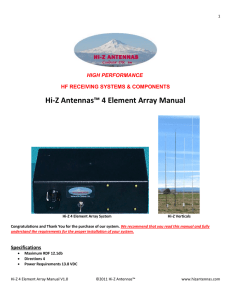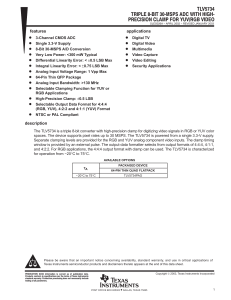Week 5 ( 9/27 & 9/29 ) ( In Word!!!!! )
advertisement
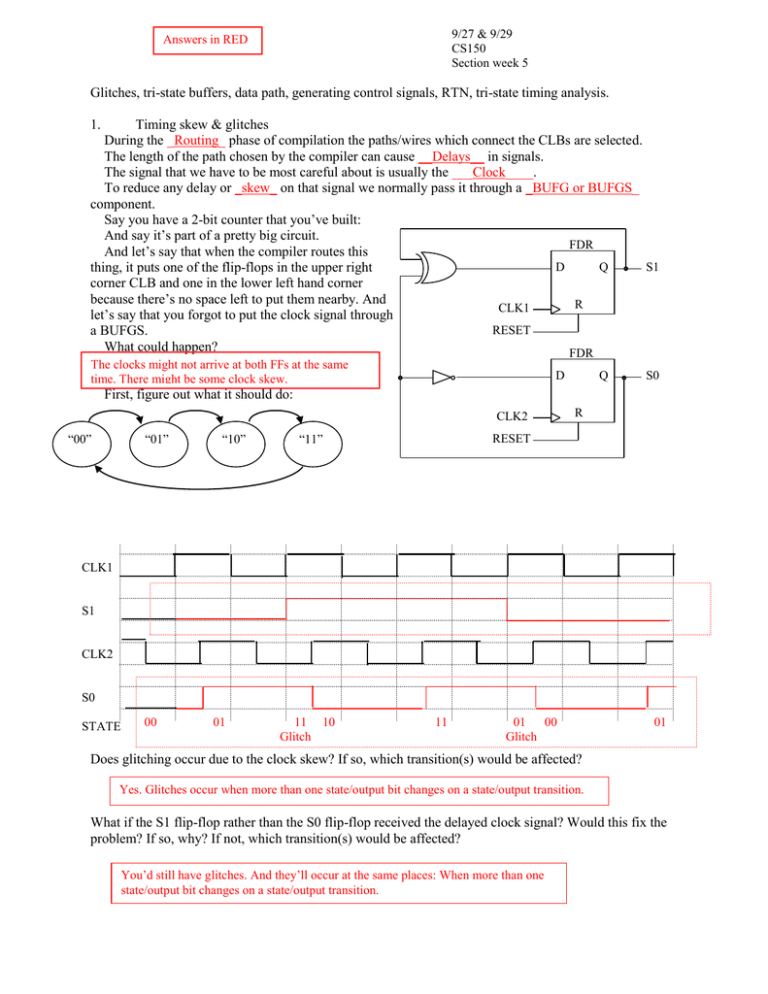
9/27 & 9/29 CS150 Section week 5 Answers in RED Glitches, tri-state buffers, data path, generating control signals, RTN, tri-state timing analysis. 1. Timing skew & glitches During the _Routing_ phase of compilation the paths/wires which connect the CLBs are selected. The length of the path chosen by the compiler can cause __Delays__ in signals. The signal that we have to be most careful about is usually the ___Clock____. To reduce any delay or _skew_ on that signal we normally pass it through a _BUFG or BUFGS_ component. Say you have a 2-bit counter that you’ve built: And say it’s part of a pretty big circuit. FDR And let’s say that when the compiler routes this D Q S1 thing, it puts one of the flip-flops in the upper right corner CLB and one in the lower left hand corner because there’s no space left to put them nearby. And R CLK1 let’s say that you forgot to put the clock signal through RESET a BUFGS. What could happen? FDR The clocks might not arrive at both FFs at the same time. There might be some clock skew. D Q S0 First, figure out what it should do: CLK2 “00” “01” “10” “11” R RESET CLK1 S1 CLK2 S0 STATE 00 01 11 10 Glitch 11 01 00 Glitch 01 Does glitching occur due to the clock skew? If so, which transition(s) would be affected? Yes. Glitches occur when more than one state/output bit changes on a state/output transition. What if the S1 flip-flop rather than the S0 flip-flop received the delayed clock signal? Would this fix the problem? If so, why? If not, which transition(s) would be affected? You’d still have glitches. And they’ll occur at the same places: When more than one state/output bit changes on a state/output transition. 2. Tri-state buffers A tri-state buffer has 3 states: 0, 1, Hi-z ( high impedance ). There are two kinds of tri-state buffers: Enabled high (BUFE) and enabled low (BUFT). BUFE BUFT T E IN OUT E 0 0 1 1 3. IN 0 1 0 1 OUT T 0 0 1 1 Hi-Z Hi-Z 0 1 OUT 0 1 Hi-Z Hi-Z ENC CLK Z ENB T* C T+ A Y IN 0 1 0 1 Data path, generating control signals, RTN, tri-state timing analysis ENA X OUT IN CLK + ENTMP TTMP * END TMP CLK D B TX TY TZ CLK CLK 8 Components: Tri-state buffers, D Flip-flops, ALU ( Arithmetic Logic Unit ), Bus, Registers Control signals Values from memory Problem: TMP = ( X + Y ) * Z In Words RTN ( Register Transfer Notation ) (For this problem assume tristates turn off quicker than they turn on.) Control Signals TX TY TZ T+ T* TTMP ENA ENB ENC END ENTMP Load X Into A AX 0 1 1 1 1 1 1 0 0 0 0 Load Y Into B BY 1 0 1 1 1 1 0 1 0 0 0 Load A+B Into C C A+B 1 1 1 0 1 1 0 0 1 0 0 Load Z Into D DZ 1 1 0 1 1 1 0 0 0 1 0 Load C*D Into TMP TMP C*D 1 1 1 1 0 1 0 0 0 0 1 TAZ & TZA TAZ is the time it takes for the output of a BUFT to go to Hi-z after select line goes high. ( Or the time it takes the output of a BUFE to go to Hi-z after the select line has gone low. ) TZA ... Write timing diagram for putting X into A and Y into B if TAZ and TZA are 0. Assume the control signals change on the same clock as the datapath and Thold = 0. CLK1 TX TY ENA ENB What would happen if you used this timing when TAZ is not zero? There would be two BUFTs putting a value on the bus at the same time for the time TAZ – TZA at the transition at the second rising edge... Draw the timing if you didn’t know which was larger, TAZ or TZA, and wanted to be safe. CLK1 TX TY ENA ENB If you know that TAZ is always less than TZA then the timing in the upper diagram would work.
